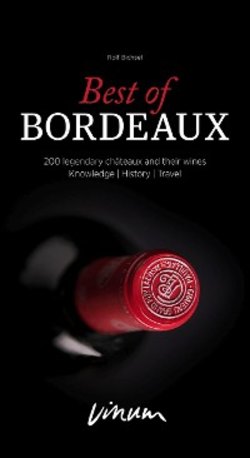Читать книгу Best of Bordeaux - Rolf Bichsel - Страница 15
Оглавление15
Ausonius and the Romans History
Condat with a team of mules. In 1806, local historian Suffrein published a history
of Libourne, which he took to be the former Condat. In Gallic the name means
a place located at a confluence: today around 100 different ‘condats' have been
identified from those times, including what are now Cognac and Angers. Libourne
does not appear on the list. It was on the basis of this meagre evidence that Suf-
frein established Ausonius' villa as being in Saint-Emilion, where Gallo-Roman
artefacts have indeed been found. However, after archaeologists found the foun-
dations of a large Roman villa near Saint-André / Montagne, Suffrein's thesis was
dismissed as pure fabrication. Researchers still argue about which excavations
can be attributed to Ausonius, who owned estates in Bordeaux and Saintes but
spent a large part of his life in Milan and Trier. Whether Suffrein (whose thesis
sought primarily to demonstrate the importance of Libourne as far back as Ro-
man times) was influenced by Jean Cantenat, who renamed his estate with the
unpronounceable name of Rocblancan as “Ausone” in around 1781, or was instead
inspired by the research findings of local historians and amateur archaeologists,
is something we will probably never know. One thing is certain: during this pe-
riod, various other estates in the region (Pétrus, Conseillante and Beauséjour)
also gained finer-sounding (and thus more tempting) names. This small digres-
sion should not be viewed as an accusation of the falsification of history, but is
rather simply designed to illustrate how fact and fiction are often intertwined in
Bordeaux.
Since the most important Atlantic port in southern France came to be in Bor-
deaux, the ocean is still shaping its destiny today, and Bordeaux became the
northernmost part of south-western France to continue successfully growing
fine red wine – for Bordeaux is on the Atlantic, and not on the Mediterranean or
even the Amazon despite many opinions to the contrary! True Bordeaux locals
never go out without a cap and an umbrella, not to mention the local women
who are constantly on the alert and generally under cover, always holding onto
their skirts when walking through the city: if Billy Wilder had filmed ‘Some Like
It Hot' in Bordeaux rather than New York in 1959, Marilyn Monroe's lovely knees
could have been exposed without the need for subway grating. Here the west
wind howls, bringing rain, gales and legendary summer storms, the weather is
sometimes so capricious that the mercury gets the hiccups, and without check-
ing the weather report it is impossible to know whether you should be pulling on
a T-shirt or a woollen jumper, in the height of summer or the depths of winter.
‘A true Bordelais', as I was told with a raised finger by none other than Jacques
Chaban-Delmas, ‘never goes out walking without an umbrella'. I did it anyway
and turned up at an appointment to interview the city's legendary former may-
or soaked to the skin, dripping on the polished and waxed parquet floor of the
city hall like fresh laundry throughout our conversation. On 4 August 2003, the
thermometer here shot up to an exuberant 40.7 degrees Celsius, but on 8 August
